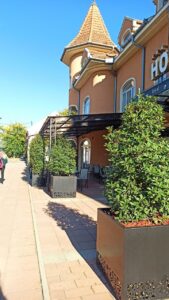Energy efficiency in building construction in Subotica: technologies and materials.
Energy efficiency in building construction has become a critical focus in urban development, particularly in regions like Subotica, Serbia. As the demand for sustainable living increases, the construction industry is adapting by integrating advanced technologies and innovative materials that promote energy conservation. This article explores the current trends in energy-efficient building practices in Subotica, highlighting the technologies and materials that are shaping the future of construction in the region.
Energy efficiency in building construction in Subotica: technologies
In Subotica, the adoption of energy-efficient technologies is gaining momentum, driven by both environmental concerns and economic incentives. One of the most significant advancements is the implementation of smart building systems, which utilize sensors and automation to optimize energy use. These systems can control lighting, heating, and cooling based on occupancy and environmental conditions, significantly reducing energy consumption. By integrating smart technologies, buildings in Subotica can achieve higher energy efficiency ratings, making them more attractive to potential occupants and investors.
Another key technology contributing to energy efficiency in Subotica is the use of renewable energy sources. Solar panels are increasingly being installed on residential and commercial buildings, allowing them to harness solar energy for electricity and heating. This not only reduces reliance on fossil fuels but also lowers utility costs for building owners. Additionally, the integration of geothermal heating systems is becoming more common, utilizing the earth’s stable temperatures to provide efficient heating and cooling solutions. These technologies not only enhance energy efficiency but also promote a sustainable approach to building design.
Furthermore, energy-efficient building technologies in Subotica are supported by government initiatives and regulations aimed at reducing carbon emissions. The local government has introduced incentives for developers who incorporate energy-efficient designs and technologies into their projects. This includes financial subsidies, tax breaks, and streamlined permitting processes for buildings that meet specific energy performance criteria. As a result, more construction companies are motivated to invest in energy-efficient technologies, contributing to a greener urban landscape in Subotica.
Energy efficiency in building construction in Subotica: materials
The choice of materials plays a crucial role in enhancing energy efficiency in building construction. In Subotica, there is a growing trend towards using sustainable and high-performance materials that improve insulation and reduce energy loss. For instance, advanced insulation materials such as aerogel and cellulose are being utilized to minimize heat transfer, ensuring that buildings maintain comfortable indoor temperatures year-round. These materials not only enhance energy efficiency but also contribute to the overall durability and longevity of the structures.
Another important aspect of energy-efficient materials is the use of recycled and locally sourced products. Builders in Subotica are increasingly opting for materials that have a lower environmental impact, such as reclaimed wood, recycled steel, and eco-friendly concrete. These materials not only reduce the carbon footprint associated with transportation and production but also promote a circular economy within the construction industry. By prioritizing sustainable materials, builders can create structures that are both energy-efficient and environmentally responsible.
Additionally, the integration of energy-efficient windows and doors is becoming a standard practice in Subotica’s building projects. High-performance glazing technologies, such as triple-glazed windows and low-emissivity coatings, significantly reduce heat loss and improve thermal comfort. These advancements in window and door technology allow buildings to maximize natural light while minimizing energy consumption for heating and cooling. As awareness of energy efficiency grows, more builders in Subotica are recognizing the importance of selecting the right materials to enhance the overall performance of their buildings.
In conclusion, energy efficiency in building construction is a vital aspect of sustainable development in Subotica. The integration of advanced technologies and innovative materials is transforming the construction landscape, resulting in buildings that are not only energy-efficient but also environmentally friendly. As the local government continues to support these initiatives through incentives and regulations, the future of building construction in Subotica looks promising. By prioritizing energy efficiency, the region can contribute to a more sustainable urban environment, ultimately benefiting both its residents and the planet.


